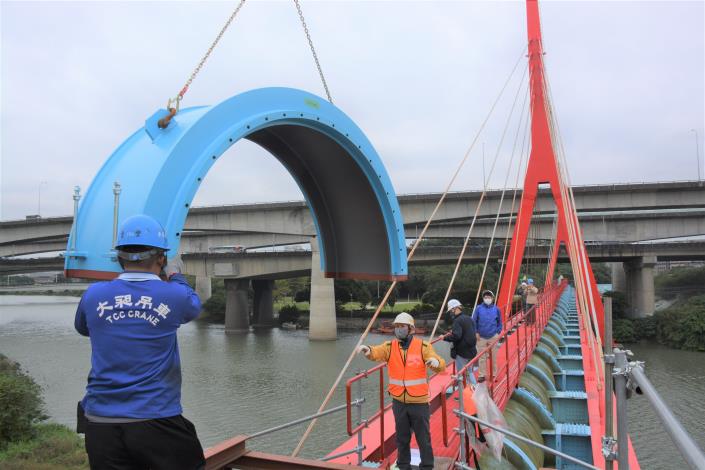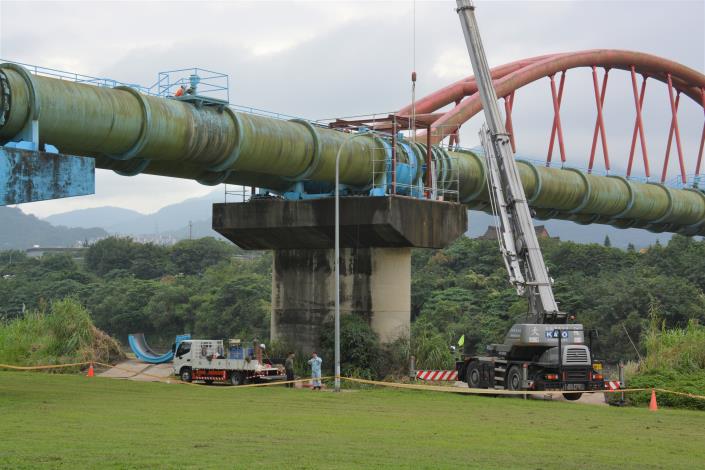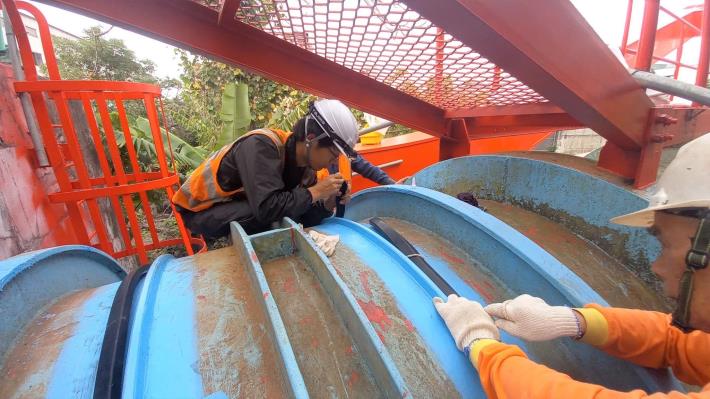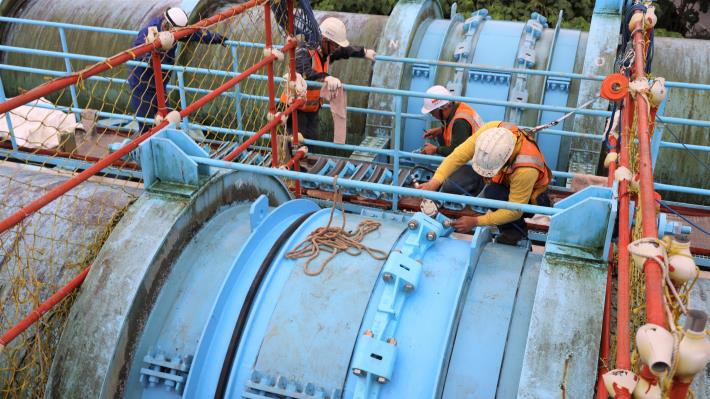First Comprehensive Seismic Improvement of Pipe Bridges Against Strong Earthquakes in Taiwan Completed
Marking a first for Taiwan, the Taipei Water Department (TWD) has carried out a comprehensive seismic reinforcement project for cross-river pipe bridges, with the seismic reinforcement work on three bridges completed. The last bridge, Yongfu Bridge, will be reinforced in May this year, and the four water mains pipe bridges will meet the national seismic standard of earthquake level 6 on the Richter scale after the completion of the project. In the face of force majeure natural disasters, the TWD is fully committed to prevention and supplying stable quality water to users. According to the TWD, the severe earthquake in Turkey in February this year has triggered a renewed interest in ensuring seismic resistance of buildings and structures in Taiwan. The pipe bridges crossing rivers in northern Taiwan is a key facility for water supply in the event of earthquake damage. If the bridge breaks, it will affect the water supply of hundreds of thousands of users in the Greater Taipei area. In light of this, the TWD has long drawn up a water supply facility preparation plan to enhance the seismic resilience of water supply infrastructure, and is planning to carry out seismic reinforcement works in phases, and is gradually completing the Yuanshan pipe bridge and the Jiantan pipe bridge across the Keelung River and the Xindian pipe bridge across Xindian River. The reinforcement work on Yongfu Bridge will be completed in May 2023. By then, the four main pipe bridges carrying the major water transmission mains will meet the national seismic resistance standard of a Level 6 on the Richter scale, which is the first comprehensive seismic improvement of water pipe bridges in Taiwan. The TWD explained that the seismic strengthening of the bridge was commissioned to the National Center for Research on Earthquake Engineering and Sinotech Engineering Consultants, Ltd. to conduct a safety assessment, and the strengthening work was divided into lower structural safety and upper pipe functional improvement, so that the bridge would not collapse in the event of a strong seismic activity, and also to prevent water leakage and damage that might affect normal function. The reinforcement method is to add telescopic tie rods and reinforcing jackets, and the construction process is to disassemble the components one by one, clean the parts, replace them with new o-rings and stainless steel bolts, and then install them back in reverse step by step. The retrofitting process is similar to that of restoring an ancient monument, with careful attention to detail in order to achieve the desired seismic function. The four major water main pipe bridges in Taipei and New Taipei have a total capacity of 2.7 million tons per day, serving a population of 6 million in the Greater Taipei area. The seismic reinforcement project will be completed soon to provide stability and safety for the water supply system in the event of future strong seismic events.





![Taiwan.gov.tw [ open a new window]](/images/egov.png)
